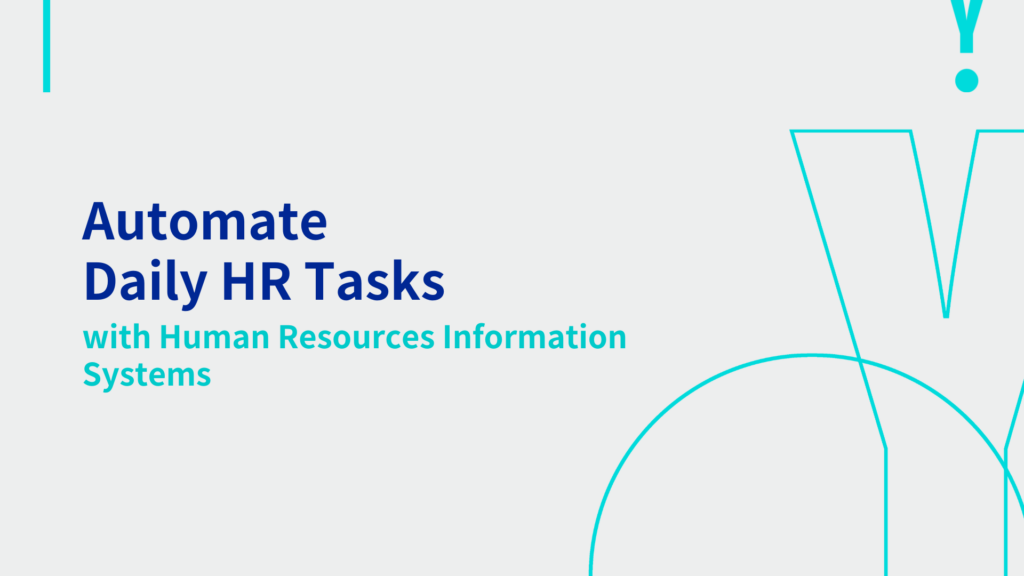
Do you know why manual HR processes are holding you back?
Managing HR tasks manually eats up time and creates unnecessary bottlenecks for your business. Spreadsheets, emails, and paper forms; there are many outdated things. Global businesses thrive on efficiency, accuracy, and agility—yet traditional HR systems often slow down daily operations. That’s where automation steps in.
Therefore, by integrating Human Resources Information Systems (HRIS), companies streamline repetitive tasks and improve workforce management. It’s not just digital, it’s transformational.
Whether you’re onboarding new employees or tracking leaves, automation simplifies the process and ensures real-time accuracy. That’s a game-changer.
With an HRIS, global companies finally align their people strategy with digital transformation goals. Efficiency doesn’t need to compromise personalization anymore. So, why waste another day juggling admin chaos when technology offers a smarter solution?
Let’s explore how HR automation changes everything.
- What Is Human Resources Information Systems Automation?
- Why HRIS Is The Backbone of Modern HR Automation?
- Key HR Tasks You Can Automate Immediately
- How HR Automation Supports Global Workforce Needs
- Choosing The Right HRIS for Seamless Automation
- Implementation Tips: Make Your HR Automation Transition Smooth
- Why Automation Is Worth The Investment?
- Final Thoughts
What Is Human Resources Information Systems Automation?
HR automation means using software to perform repetitive tasks without manual input. It increases production, decreases errors, plus saves time. Unlike manual HR workflows, automated systems handle records, payroll, and employee requests in real-time with fewer human interventions.
Moreover, automation helps HR teams focus on strategy, not paperwork. You get better insights, smoother processes, and happier employees. For global enterprises, consistency is key. An HRIS offers standardized practices across regions while staying compliant with local labor laws.
With growing hybrid teams, automation becomes essential. Hence, it supports remote operations with centralized access and accurate, real-time data.
Why HRIS Is The Backbone of Modern HR Automation?
An HRIS is not just a database rather, it’s your HR team’s digital powerhouse. The HR management system can be thought of as your comprehensive HR toolkit. Payroll, attendance monitoring, and benefits administration are among the fundamental tasks it automates. Everything is streamlined through a single, user-friendly interface.
Most HRIS platforms offer modular tools. You can start small—maybe with recruitment—and scale as your team grows globally.
The beauty of HRIS lies in its flexibility. Customizable dashboards and workflows mean the system adapts to your organizational structure. More importantly, modern HRIS tools support integrations. Whether it’s finance, operations, or CRM software, everything works harmoniously.
Key HR Tasks You Can Automate Immediately
Onboarding Made Seamless
New hires often get lost in paperwork. Automating onboarding delivers structured processes, digital documents, and better first-day experiences. Automated systems send welcome emails, assign training modules, and collect e-signatures—all without manual follow-ups.
With templates and checklists, HRIS ensures every new employee feels guided, not overwhelmed. That’s crucial for global onboarding consistency.
Attendance & Time Tracking
Manual time-tracking often results in discrepancies and disputes. Automation eliminates guesswork by recording check-ins accurately using biometric or geolocation tools. An HRIS lets employees request time off, view balances, and track approvals—everything accessible through one self-service portal.
Payroll Processing And Tax Compliance
Payroll is complex. Mistakes are costly. With the best Human Resources Information Systems, payroll becomes fully automated—tax calculations, deductions, and compliance are handled precisely. Employees receive accurate payslips, and finance teams enjoy synchronized, audit-ready data. Global payroll?
No problem, the best HRIS platforms support multi-currency and regional tax rules.
Performance Reviews And Goal Tracking
Annual reviews can feel forced and outdated. HRIS platforms let you automate real-time feedback loops, quarterly reviews, and development plans. Managers can assign goals, monitor KPIs, and share feedback within one system—backed by analytics and employee engagement scores.
Leave & Holiday Management
An HRIS tracks global holidays, syncs with regional calendars, and automatically applies company leave policies per location. Employees can view their leave balances, submit requests, and receive approvals—all without HR intervention.
How HR Automation Supports Global Workforce Needs
- Ensures Cross-Border Compliance
Different countries have different labor laws. Hence, globally compliant HRIS systems help businesses stay compliant with tax regulations, benefits, and recordkeeping. Automation reduces legal risks by sending alerts for policy updates and ensuring real-time documentation accuracy.
- Boosts Productivity in Remote And Hybrid Teams
Distributed teams need seamless access to HR tools.
HRIS platforms offer cloud-based interfaces and mobile apps for anytime-anywhere access. Self-service portals empower employees while reducing ticket volumes for HR departments. Everyone wins; especially productivity.
- Provides Data-Driven Decision Making
With automation using an HR management system, your HR team gains valuable insights into hiring trends, attrition rates, and employee engagement. Real-time dashboards help business leaders forecast workforce needs, plan budgets, and spot performance gaps early.
Choosing The Right HRIS for Seamless Automation
- Selecting an HRIS for your office should match your current size, budget, and long-term goals. Start by listing your must-have features and compliance needs.
- Popular HRIS features include applicant tracking, payroll automation, benefits management, and employee self-service modules.
- Look for cloud-based options that offer multilingual as well as multicurrency support. Scalability should never be an afterthought.
- Furthermore, ensure the system integrates with your existing tech stack—CRM, accounting software, or communication tools.
- Consider vendor reputation, implementation support, and user experience. A clunky interface discourages use, even if features are impressive.
Implementation Tips: Make Your HR Automation Transition Smooth
Start with a phased rollout. Begin with high-impact modules like attendance or payroll, then expand to performance and recruitment.
Encourage adoption by highlighting benefits to employees—less paperwork, quicker access, and easier communication. You can also set benchmarks and track improvements. Measure task completion time, error rate reduction, and employee satisfaction post-implementation.
Also, gather regular feedback. Continuous improvement ensures your HRIS evolves alongside your organizational needs.
Why Automation Is Worth The Investment?
Businesses adopting HR automation report faster task completions reduced administrative costs, and improved compliance. Companies using HRIS cut HR operating costs by up to 30%—according to a study. That’s major!
Employee satisfaction improves too. Faster responses, transparent communication, and user-friendly access make employees feel empowered and valued. Additionally, HR teams can now focus on talent strategy, not data entry. That’s how you attract and retain top global talent.
With automation, errors decrease significantly. From payroll to leave tracking, you’ll finally eliminate repetitive mistakes that disrupt operations.
Final Thoughts
Manual HR processes no longer align with the speed and demands of today’s global business world. It’s time to automate smartly. The best Human Resources Information Systems allow your company to simplify workflows, ensure compliance, and focus on strategic people development—not paperwork.
The transition might seem complex—but the results?
Undeniably transformative. You’ll gain speed, clarity, and agility across every HR touchpoint. So, if you are ready to future-proof your HR department, HR automation is the place to begin. The time for change is now.
Are you ready to embrace HR automation?
Let’s talk about the best HRIS solution for your business today. Visit us at YOOV.
Connect with YOOV

WhatsApp:Click Here
Email:hello@yoov.com
Website:https://www.yoov.com/